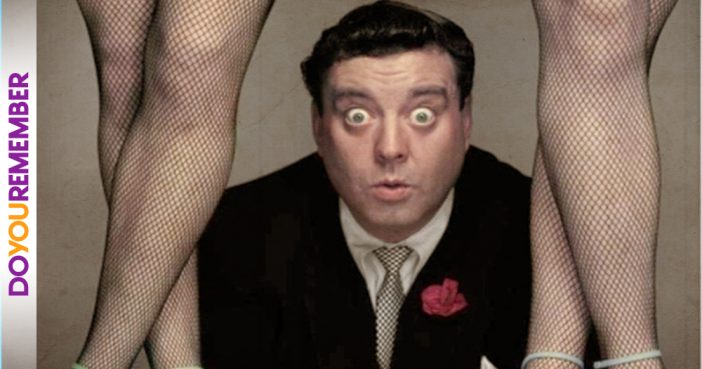
Loudmouthed men readily come under fire these days. From Charlie Sheen to Alec Baldwin, boozy party-loving creatives get a bad rap. However, back in the early days of television, Jackie Gleason’s brash bluster was more than tolerated—it was celebrated! Born in Brooklyn as the youngest child in a broken home (both parents drank, and one day his father just disappeared), Gleason grew up poor and vowed to overcome the hardships of his youth through performing. His big personality, infectious talent and love of a good time propelled him from rundown New York clubs to Hollywood and eventually his own weekly television show. As a performer he had more versatility than both of Madonna’s cheekbones combined, moving easily between comedy and drama and even displaying his musical chops on occasion.
]After several years as a struggling character actor for MGM, Gleason was afforded a space to be himself on TV with his very own program. The Jackie Gleason Show was a variety extravaganza that featured musical numbers composed by the man himself, as well as sketches and skits starring the portly actor. Soon, Gleason had developed a whole coterie of beloved characters that would appear from week to week.
His most indelible role is certainly that of wisecracking bus driver Ralph Kramden. The Honeymooners started as a sketch on Gleason’s variety show before becoming TV’s first successful spinoff. The original short blossomed into 39 half-hour episodes—co-starring Art Carney as best friend Ed Norton and Audrey Meadows as wife Alice—which are still in syndication and enjoy a cult status for their peculiarly American brand of machismo. As a performer Gleason had a rare talent for combining the comically repugnant with a warm likeability. Who else could get away with constantly threatening his wife with physical abuse every week, and leave audiences aching for more?
(The original Honeymooners starred Pert Kelton as Alice. Once the show received its own time slot, Kelton was replaced by the much younger Meadows. Hardcore fans of the show still find the Kelton incarnation jarring to watch.)
Despite never learning to read music, Gleason composed songs for his variety show, The Honeymooners and a number of albums by humming tunes to his band. After watching Cary Grant movies in which the musical score heightens the romantic tension in the scenes, Gleason wanted to make tracks that could help out the average schmo’s love life. He figured, “If Grant could use help, we all could.”
Wanting a change, Gleason moved to Miami Beach, where he continued taping his weekly variety show for CBS until 1970. In Florida he picked up a love of golf and eventually built a scenic home in the Inverrary Country Club in Lauderhill. Despite the move he never retired, and the consummate performer kept working up until the end. In 1986 he starred opposite Tom Hanks in Nothing in Common while battling both colon and liver cancer. A year later he passed away at this Florida home.
In the early days of television, critics feared that because the medium’s screen was so small people would not become fully absorbed by it the way they were by film. Little did they know that a big man with an even bigger talent could fill that little screen with so much life it still registers long after his passing.
